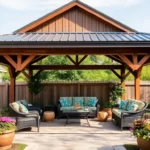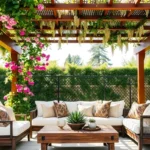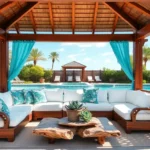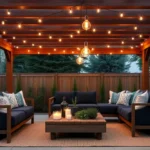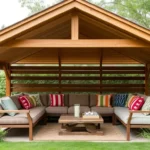Transforming your backyard into a personal oasis is more than just a trend—it’s an enriching way to expand your living space and enhance your connection with nature. Whether you’re a novice eager to embark on your first outdoor project or a seasoned DIY enthusiast, crafting your own patio cover can provide both a sense of accomplishment and a beautiful, functional space for relaxation and gatherings.
In this article, you’ll discover ten innovative and budget-friendly DIY patio cover ideas that cater to all skill levels. From simple sail shades to more intricate pergola designs, we’ll guide you through the possibilities, offering inspiration and practical tips to help you create a sanctuary that reflects your style and meets your outdoor living needs. Let’s dive into the world of DIY patio covers and unlock the potential of your backyard!
Choosing the Right Patio Cover
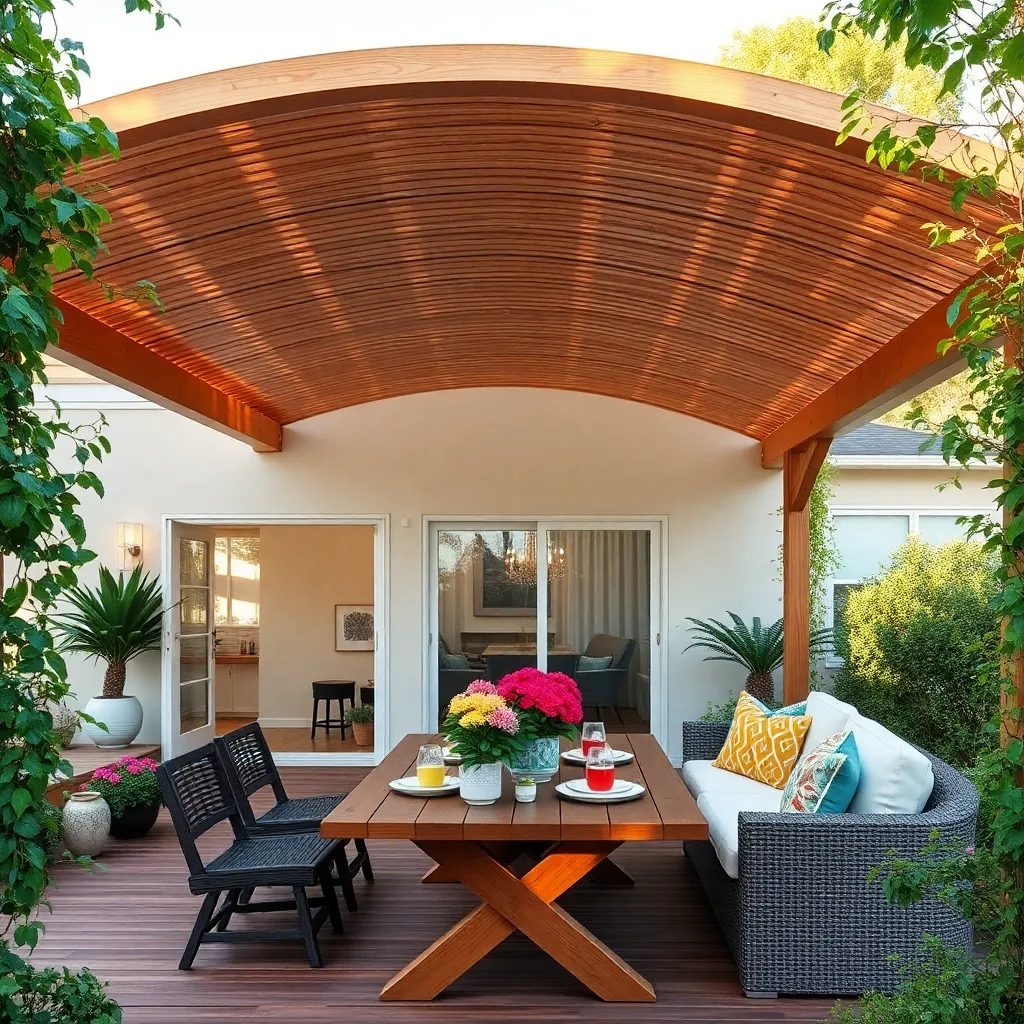
When choosing the right patio cover, consider the climate and your outdoor needs. For sunny regions, a solid roof made of materials like aluminum or polycarbonate can provide excellent protection from the sun. Wooden pergolas with climbing plants offer a blend of shade and natural beauty, making them ideal for areas with moderate weather. It’s crucial to match the design style of your home—modern frames with clean lines may suit contemporary homes, while rustic wooden beams might complement a more traditional setting.
Material selection is key to ensuring durability and maintenance ease. Aluminum is lightweight and rust-resistant, making it a low-maintenance choice for many homeowners. On the other hand, wood requires regular sealing to prevent rot but offers a warm, inviting look. For DIY enthusiasts, a simple fabric sail can be an affordable and flexible option; ensure it’s made from UV-resistant material for longevity. When planning your patio cover, consider dimensions that allow ample airflow while providing adequate coverage—typically, a height of 8-10 feet is recommended to balance shade and ventilation.
Simple Wood Pergola Design
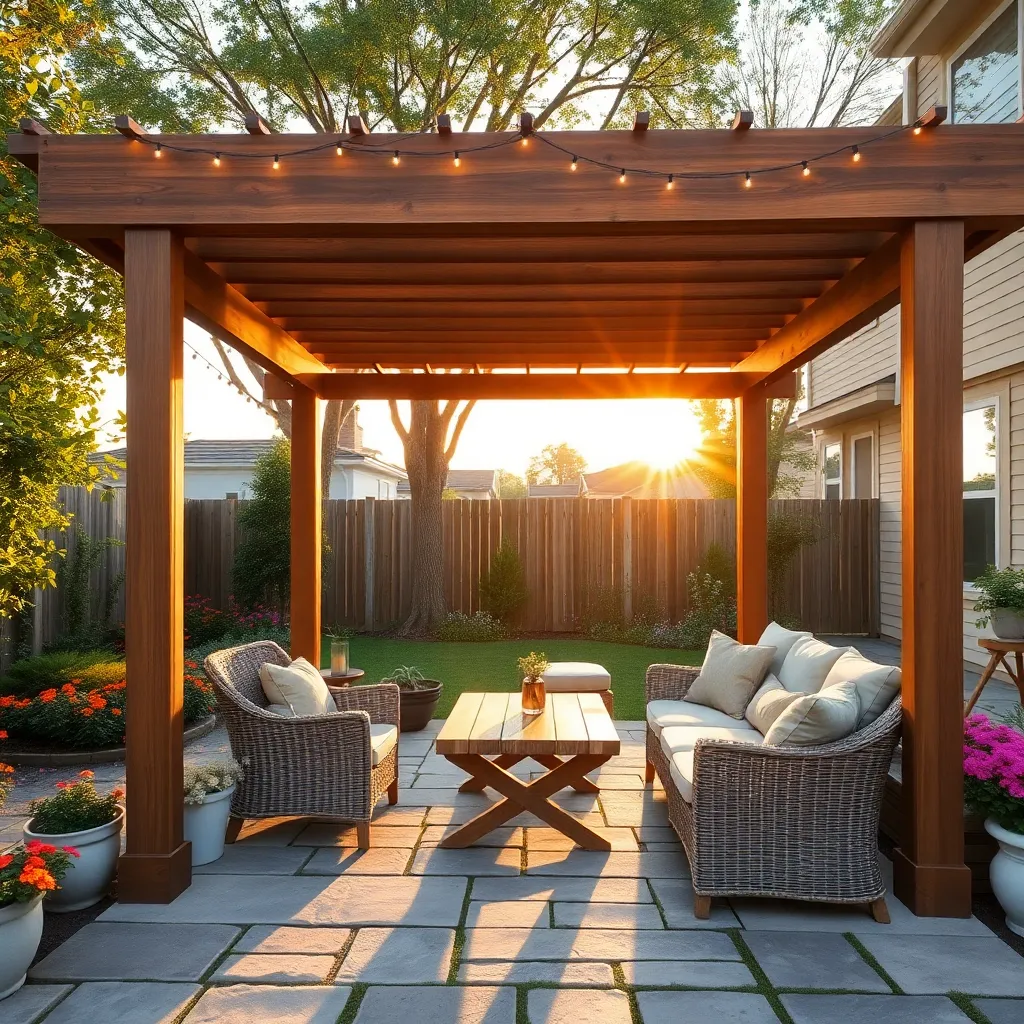
For a simple wood pergola design, start by selecting durable materials like cedar or redwood, which are naturally resistant to rot and insects. A basic pergola structure typically includes four posts, a set of beams, and cross rafters. Ensure the posts are securely anchored in concrete footings to provide stability and longevity. Beginners can opt for a standard size of around 10×10 feet, which offers ample shade without overwhelming a small backyard.
Consider adding design elements such as notched rafters or decorative end cuts for a custom look. Advanced builders might incorporate elements like a retractable canopy for added versatility in changing weather. Use pressure-treated wood for any ground-contact components to enhance durability.
- Tip: Pre-drill holes to prevent wood from splitting during construction.
- Tip: Use galvanized or stainless steel hardware to avoid rusting.
These details will make your pergola both functional and an aesthetically pleasing focal point in your outdoor space.
Retractable Canopy Installation Tips
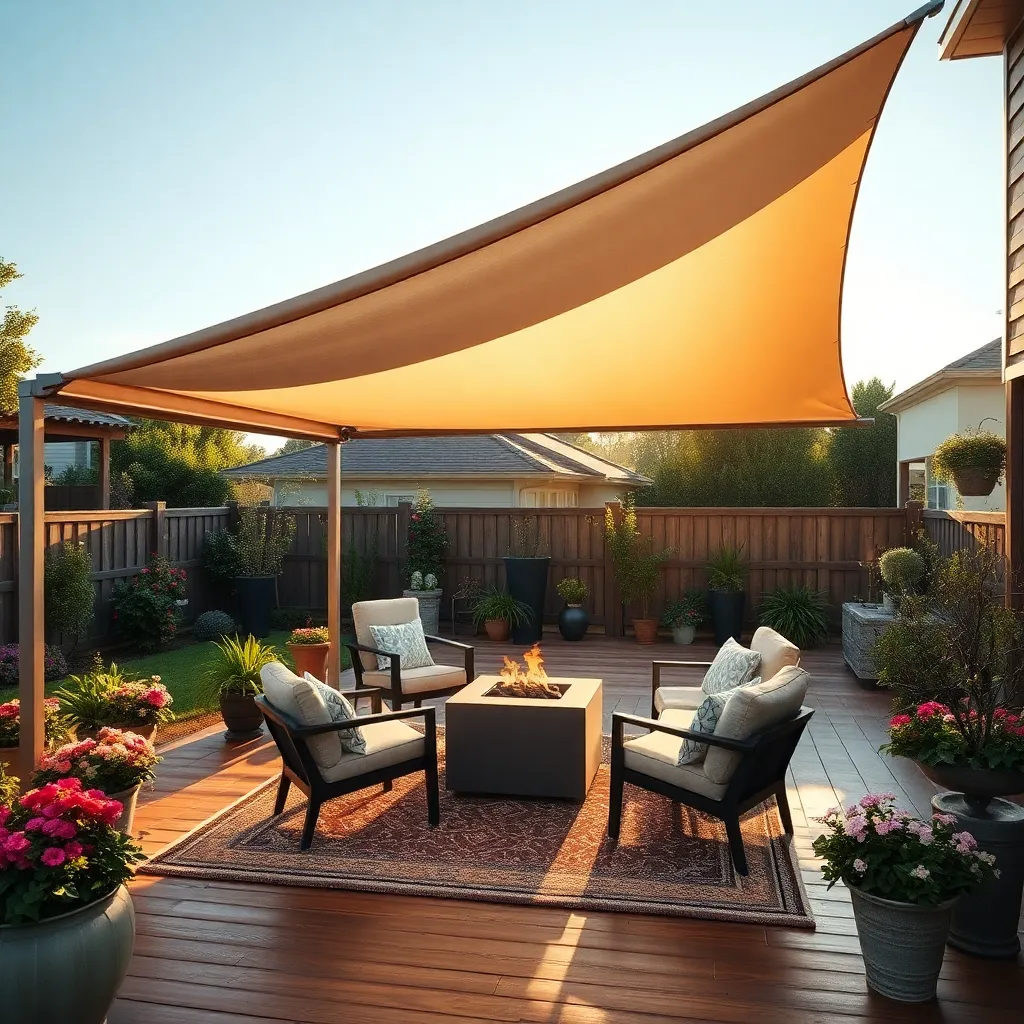
For a successful retractable canopy installation, start by selecting a durable, weather-resistant fabric like acrylic or polyester that can withstand varying climates. Measure your patio area accurately to ensure the canopy fits precisely—most systems are adjustable, but a snug fit enhances aesthetics and function. Beginners should consider purchasing a ready-to-install kit, which usually includes all necessary hardware and detailed instructions, making the process easier and more straightforward.
Advanced DIYers might prefer customizing their canopy system. Consider adding motorized tracks for ease of use, especially for larger patios. When securing the canopy to your home’s structure, use stainless steel brackets and bolts for longevity and strength. Pay attention to the angle of installation; a slight slope ensures proper rain runoff. Regular maintenance, like cleaning and lubricating the retracting mechanism, will keep your canopy in top condition year-round, providing both shade and style to your outdoor space.
Building a Budget-Friendly Gazebo
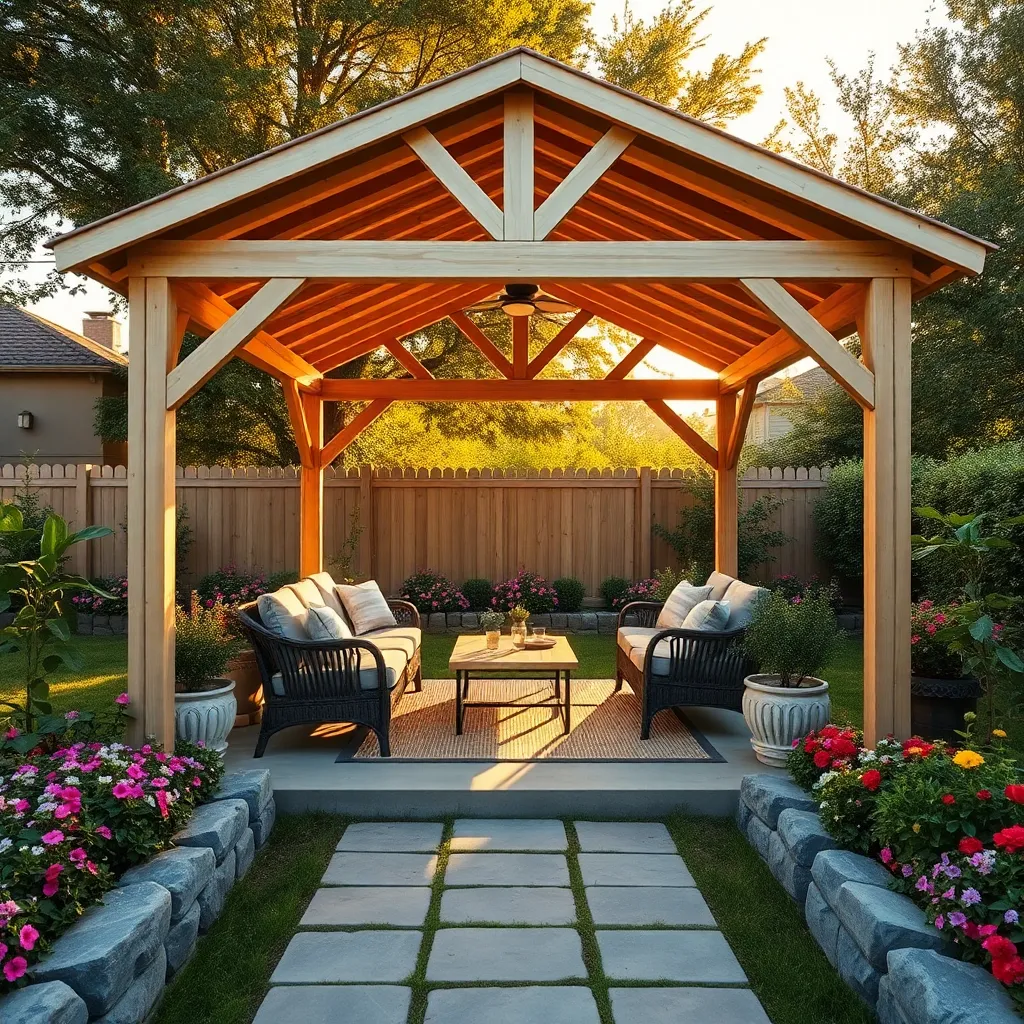
Creating a budget-friendly gazebo is a rewarding project that can enhance the aesthetics and functionality of your backyard. Start by selecting durable, cost-effective materials like pressure-treated wood or galvanized steel for the frame, which offer excellent longevity without breaking the bank. For the roof, consider using corrugated metal or polycarbonate panels, as these are both affordable and weather-resistant. Beginner tip: Opt for a simple square or rectangular design to ease the construction process and minimize material waste.
For those with a bit more experience, incorporating design elements like lattice panels or hanging planters can add a personalized touch to your gazebo. Ensure the foundation is level and stable; concrete footings or deck blocks can provide a solid base. When planning dimensions, a typical functional gazebo might measure around 10×10 feet, providing ample room for seating and decor. Advanced tip: Add string lights or outdoor curtains to create a cozy, inviting atmosphere that extends your outdoor enjoyment into the night.
Modern Steel and Glass Covers
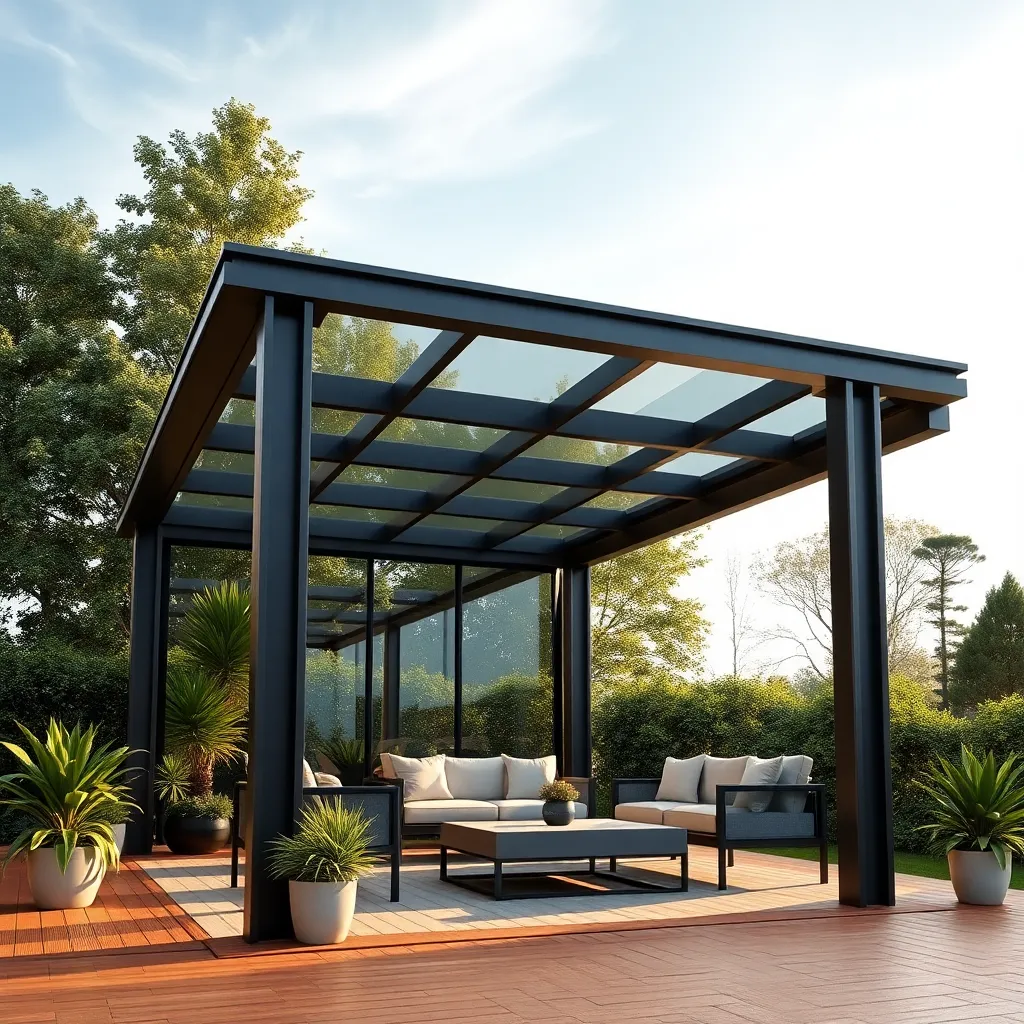
Modern steel and glass covers offer a sleek, contemporary solution for homeowners looking to enhance their outdoor space. To begin, gather materials like galvanized steel beams and tempered glass panels, ensuring they’re weather-resistant and durable. Choose a minimalist design with clean lines to complement any home style, and consider the orientation of your patio to optimize sunlight and shade. For beginners, a simple rectangular structure supported by steel posts can provide an elegant yet straightforward assembly process.
For those ready to dive deeper, consider incorporating advanced features such as integrated LED lighting or retractable glass panels to adjust for changing weather conditions. Ensure your structure is properly anchored to withstand wind and other outdoor elements by using concrete footings or steel plate anchors. With the right tools and a bit of planning, your modern steel and glass cover can become a standout feature in your backyard, offering both style and functionality for any gathering.
DIY Sail Shade Solutions
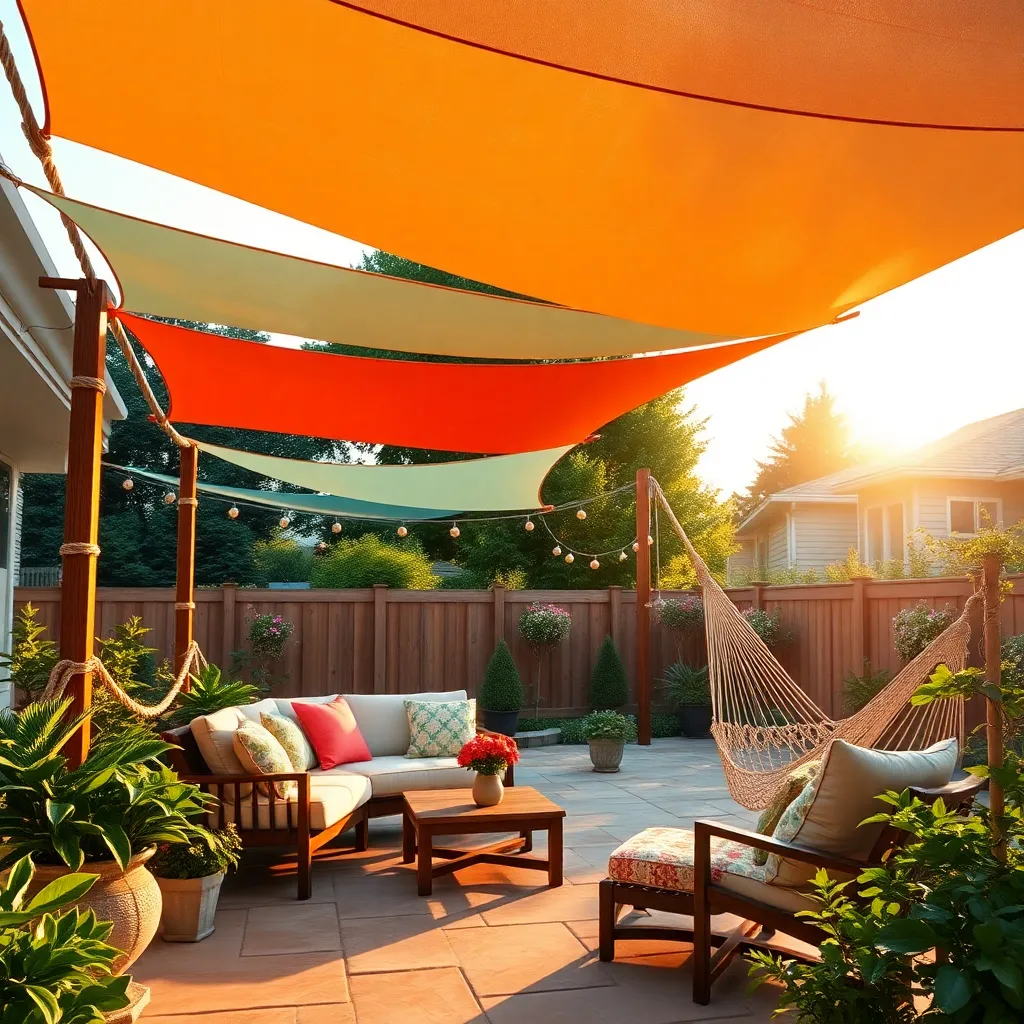
For a versatile and stylish outdoor shade solution, consider installing a DIY sail shade. These fabric canopies offer a modern aesthetic and are perfect for areas where permanent structures aren’t feasible. Start by selecting a durable, UV-resistant fabric such as HDPE (High-Density Polyethylene), which provides excellent protection from the sun. Use stainless steel hardware, including turnbuckles and pad eyes, for secure attachment and adjustability, ensuring the sail is taut and stable.
To achieve the ideal setup, plan your sail shade layout by identifying sturdy anchor points, like trees or existing structures, or consider installing wooden posts. For beginners, a simple triangular sail is easiest to work with, while more advanced DIYers might opt for multiple overlapping sails for increased coverage and visual interest. Ensure your sail is installed with a slope to facilitate water runoff and prevent sagging. This practical addition will not only enhance your backyard’s functionality but also add a touch of elegance and charm.
Natural Bamboo Roof Ideas
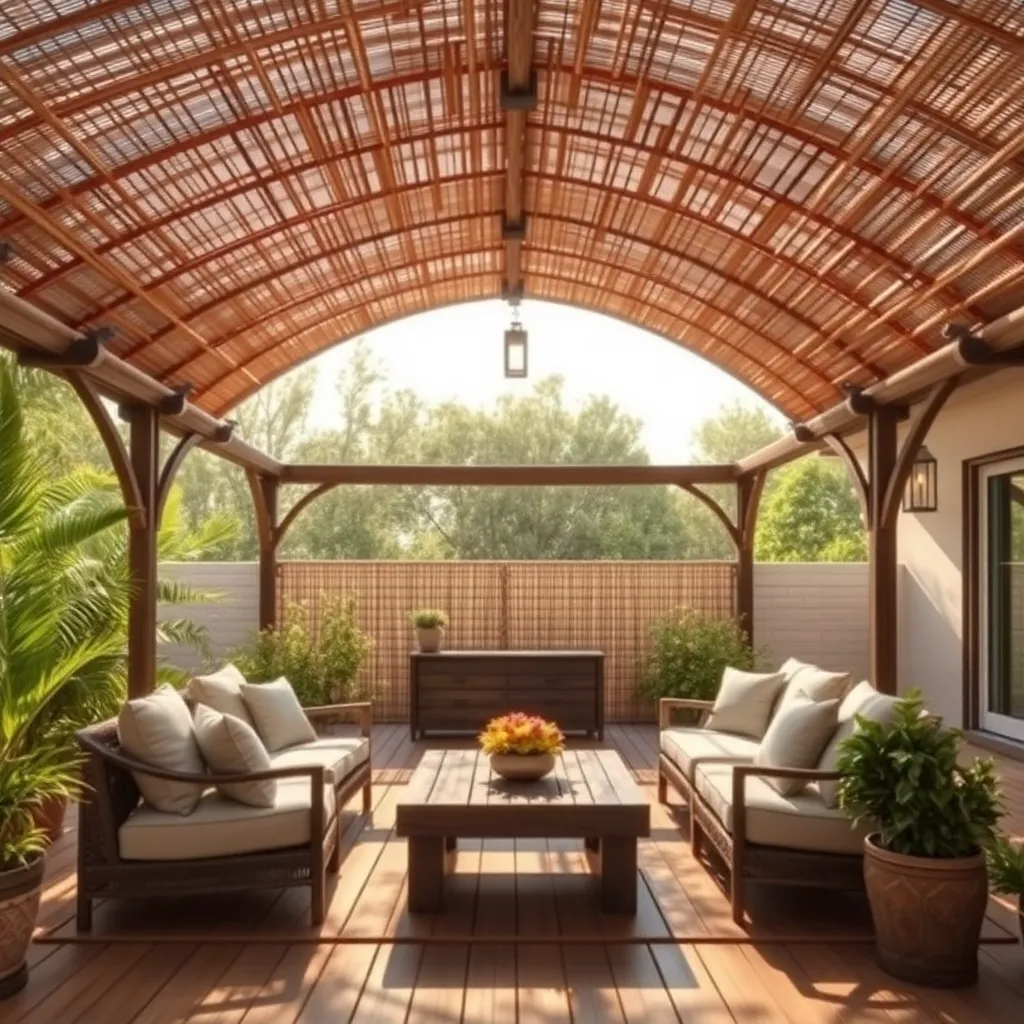
Using natural bamboo for your patio cover is an eco-friendly way to add a tropical touch to your backyard. Start by sourcing high-quality bamboo poles, usually around 1-2 inches in diameter, which can be sourced from garden centers or online retailers. Secure these poles to a sturdy wooden frame using galvanized wire or heavy-duty zip ties, ensuring they are tightly packed for adequate shade. For beginners, aim for a simple square design with dimensions like 10×10 feet, which is easy to manage and install.
To elevate your bamboo roof, consider adding a layer of weather-resistant canvas on top. This offers additional protection against rain and UV rays, prolonging the life of your bamboo cover. For those seeking an advanced touch, incorporate decorative elements such as hanging potted plants or string lights to enhance the ambiance. Regular maintenance, like applying a coat of bamboo sealant annually, will help keep your bamboo looking fresh and resilient against the elements.
Adding Vintage Charm with Awnings
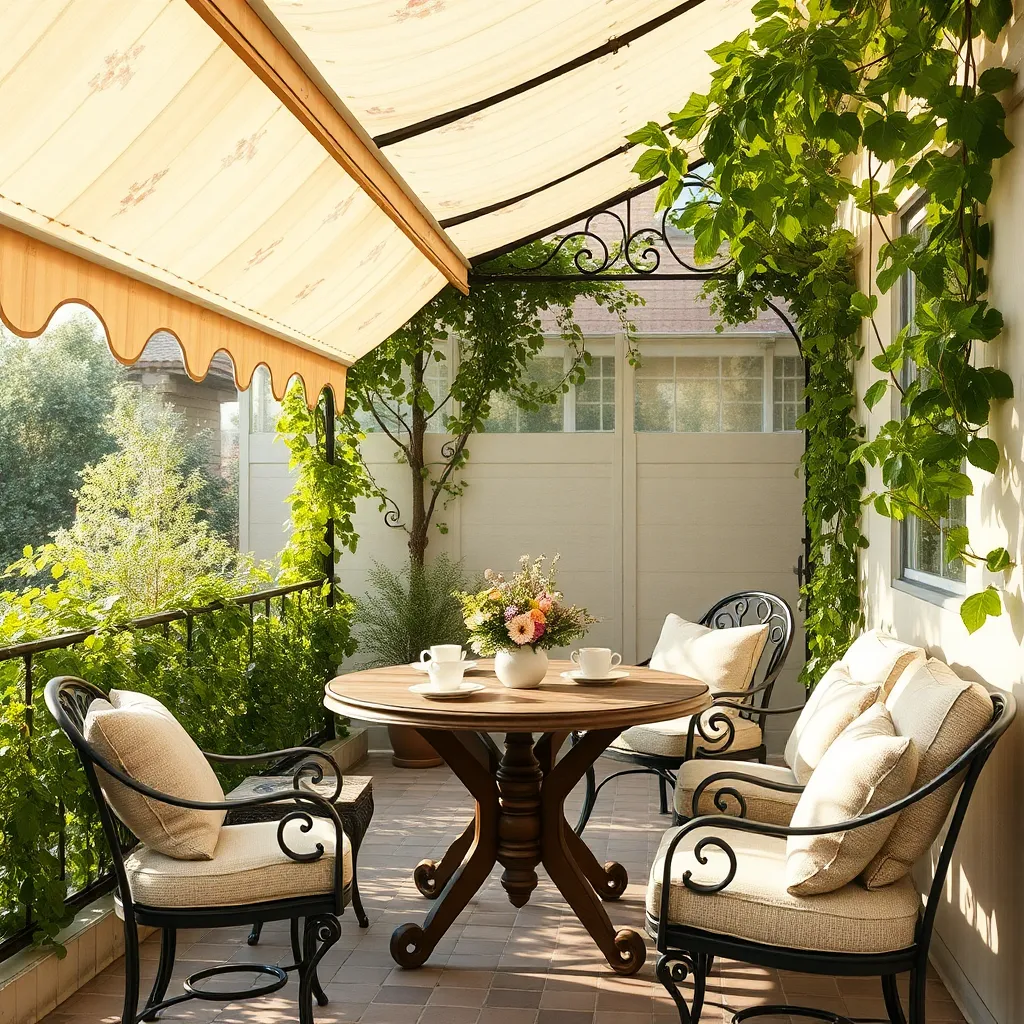
For a touch of vintage charm, consider adding awnings to your patio. Awnings not only provide shade but also add a classic aesthetic that enhances the overall ambiance of your outdoor space. Start with durable materials like canvas or acrylic fabric, which are weather-resistant and long-lasting. Use a metal or wooden frame to support the awning, ensuring it is securely fastened to your home’s exterior. Beginners can opt for pre-made kits, while experienced DIYers might want to explore custom measurements and designs to perfectly fit their patio.
To elevate the design, choose fabrics with traditional stripes or florals to echo a vintage feel. Complement the awning with decorative elements such as scalloped edges or fringe, which add an extra layer of detail. For those seeking advanced customization, consider incorporating retractable mechanisms for adjustable coverage depending on the weather. Ensure proper installation by using sturdy brackets and anchors, especially in areas prone to strong winds. With careful planning and execution, awnings can transform your patio into a stylish, comfortable retreat.
Eco-Friendly Green Roof Options
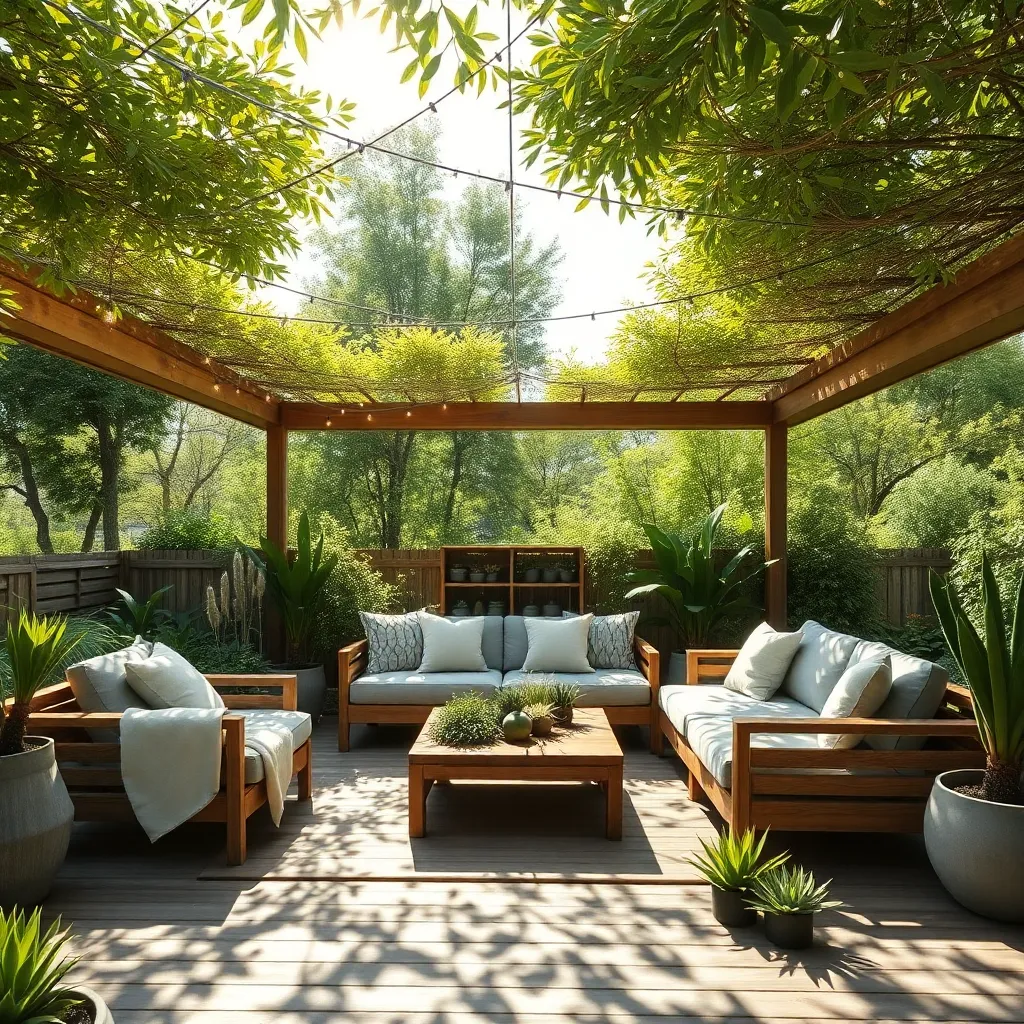
Transform your patio cover into a living ecosystem by incorporating a green roof, which not only adds beauty but also contributes to environmental sustainability. Start by ensuring your patio cover can support the extra weight of soil and plants; consult a structural engineer if you’re unsure. **Opt for lightweight, drought-resistant plants** like sedums and succulents, which are low-maintenance and thrive in various climates. A waterproof membrane is essential to protect the structure beneath; look for materials like EPDM or TPO, which are durable and effective.
For beginners, consider using pre-grown sedum mats for an easy installation process, while experienced gardeners might prefer assembling their plant palette. **Design elements like sloping the roof slightly** will assist with drainage, ensuring your plants remain healthy. Incorporate a layer of lightweight growing medium, about 2-4 inches deep, to provide the necessary nutrients without excessive weight. With these steps, your green roof will be a stunning, eco-friendly addition to your outdoor space, reducing energy costs and enhancing biodiversity.
Customizing with Decorative Curtains
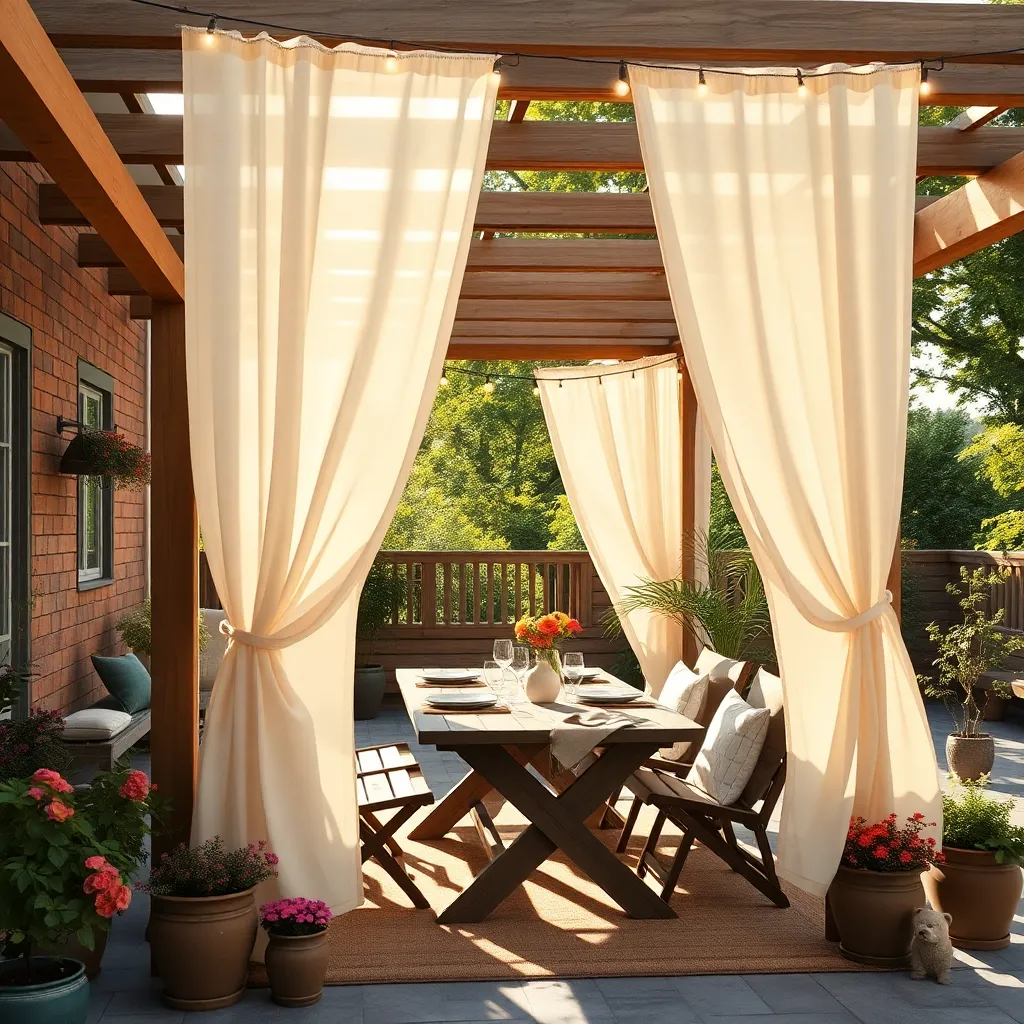
Transform your patio into a cozy retreat by adding decorative curtains to your outdoor shelter. These curtains not only add a touch of elegance but also provide shade and privacy. Consider using weather-resistant fabrics like polyester or acrylic that can withstand the elements. For a basic setup, use a tension rod between posts or attach curtain rods with mounting brackets. Ensure your curtains are long enough to reach the ground, typically around 84 inches or more, to effectively block low sun angles and provide maximum coverage.
For a more personalized touch, choose colors and patterns that complement your outdoor furniture and overall theme. Layering sheer and opaque curtains can add depth and functionality, allowing you to adjust the light levels as needed. Advanced DIYers might opt to install a curtain track system, which provides a sleek, professional look and allows for easy movement of the curtains. When selecting curtains, opt for those with UV protection to prevent fading and increase longevity, ensuring your outdoor space remains vibrant and inviting all season long.
Conclusion: Creating Beautiful Outdoor Spaces
In exploring the ’10 DIY Patio Covers for Your Backyard,’ we’ve delved into creating personalized outdoor spaces that not only enhance the beauty of your home but also strengthen the bonds with those you love. From the intimacy of a pergola to the simplicity of a shade sail, each project offers unique opportunities to collaborate, communicate, and build together. Whether you’re choosing natural materials for a rustic feel or modern designs for a sleek look, these DIY projects encourage teamwork, creativity, and shared goals—key concepts in nurturing any relationship.
Now, it’s time for action! Choose one patio cover idea that resonates with you and your partner, and plan a weekend to bring it to life. This shared project can be a catalyst for meaningful conversations and deeper connections. As you embark on this journey, remember to save this article for future inspiration and guidance. Simply bookmark it now, ensuring that you have easy access to these creative ideas whenever you need them.
Looking forward, let this be the stepping stone to a future filled with cherished moments and thriving relationships. By combining creativity with collaboration, you’re well on your way to building not just a beautiful backyard, but a stronger, more connected partnership.


